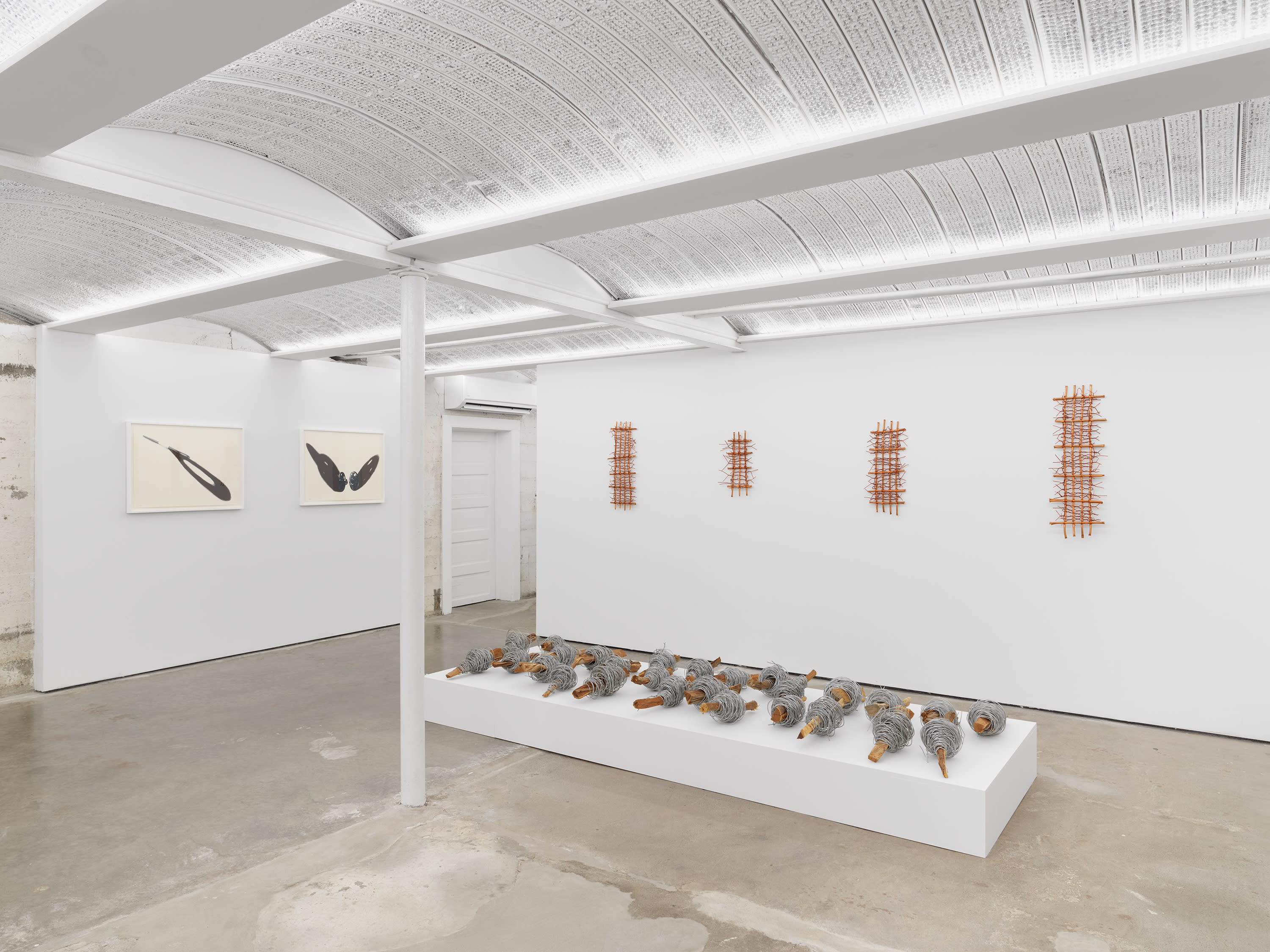-
Hassan Sharif and Regina Silveira
Between Perception and the World
Alexander Gray Associates, Germantown, NY: December 10, 2021—February 27, 2022
-
Alexander Gray Associates, Germantown presents Between Perception and the World, a two-person exhibition of work by Hassan Sharif (1951–2016) and Regina Silveira (b.1939). Placing these two artists in dialogue, the Gallery’s presentation highlights Sharif and Silveira’s shared interest in questioning societal structures. The show takes its title from a 2009 statement by Silveira: “[M]y most important concern … is the nature of visual representation, its function and the role (poetic and political) of the image as the intermediary between perception and the world.”
-

-
"I like the combination between two contradicting materials which both come from the earth. From iron ore, and from the tree. Each material has some kind of relational or erotic aspect in its combination with another. I think materials carry individual narratives. With some materials you can create a story. The material remains as a wire, it remains as rubber, or cotton ropes, but in the end it is also a vocabulary. It's like an alphabet. When you mix wood and wire it gives you two alphabets together. It's not any more wood, neither is it any more wire."
— Hassan Sharif
-

-
-
Like Sharif’s Iron No. 2, Regina Silveira’s Middle Class & Co. (1971) engages in social critique. This set of fifteen silkscreens depicts a crowd constrained and forced into tight configurations. Referencing class struggles and the sociopolitical realities of Brazil in the 1970s as the country was under military rule, the images make an unequivocal political statement. Silveira illustrates the stratification of society—in one composition from the series, she literally divides and stacks groups of people one on top of the other. This pointed critique is further underscored by the silkscreens’ reductive black and red palette and geometric forms, which formally connect the works to Constructivism and the aesthetics of revolution.
-

Regina Silveira
Middle Class & Co., 1971
Silkscreen on paper in 15 parts
25 x 18 7/8 in each (63.3 x 47.9 cm each)
(RS116_009)
-
Silveira identifies this work as the origin of a newly developed printmaking aesthetic for her, elaborating that “The album Middle Class Company [Middle Class & Co.], with images of a large crowd of people … was, at the time, the beginning of a more consistent path—of graphic multimedia—toward what is better known as my production and initial work in São Paulo …”
Middle Class & Co. is also one of the first works by the artist that introduces a more political tone through its focus on the masses and reference to the working class. “When I returned to Brazil in 1973, constitutional rights were still suspended and denunciations, arrests, torture and a general sense of vulnerability continued to corrupt the realms of public and private life and work. Popular music, the theatre and the visual arts constantly responded to this situation with politically charged messages, although their content could not manifest itself freely but only in the form of highly poetic metaphors that often managed to avoid being censored. I think that the first pieces of mine to be really influenced by the political and social events of that period were the series of words [sic] made with the new graphic media of the 1970s. The images they feature were almost always critical representations, some focusing on political power and others on the media and urban deterioration. Even so, there is virtually nothing overtly political in these series because I always prefer to filter my images through irony.”
-
“No, the grid is not policing. It is a way of mapping form. The grid allows me to make distortions and occupy spaces. I use drawing as an instrument of knowledge and not as an expression of technical virtuosity.”
— Regina Silveira
-
Shifting away from overt political messaging, later graphic work by Silveira focuses on the formal and philosophical relationships between reality and perception. The artist’s 2002 Armarinhos series transfigures household objects into abstract forms through wildly skewed shadows. Silveira characterizes these works as “enigmatic,” explaining that they “… serve as indexical signs … [and are] enigmatic because they are marks left by light.” Collapsing the distinction between an object and its image through the play of light and shadow, Silveira’s compositions draw attention to the mutability of perception.
-
-
This mutability is at the core of Silveira and Sharif’s art. Just as Silveira’s practice advocates for a constantly evolving understanding of space and representation, so too does the materiality of Sharif’s installations and sculptures draw attention to the shifting physical and cultural landscape of society. Ultimately, both artists’ works embody, to quote Sharif, “… the rhetorical and aesthetic structure unique to the new and contemporary human.”
-












